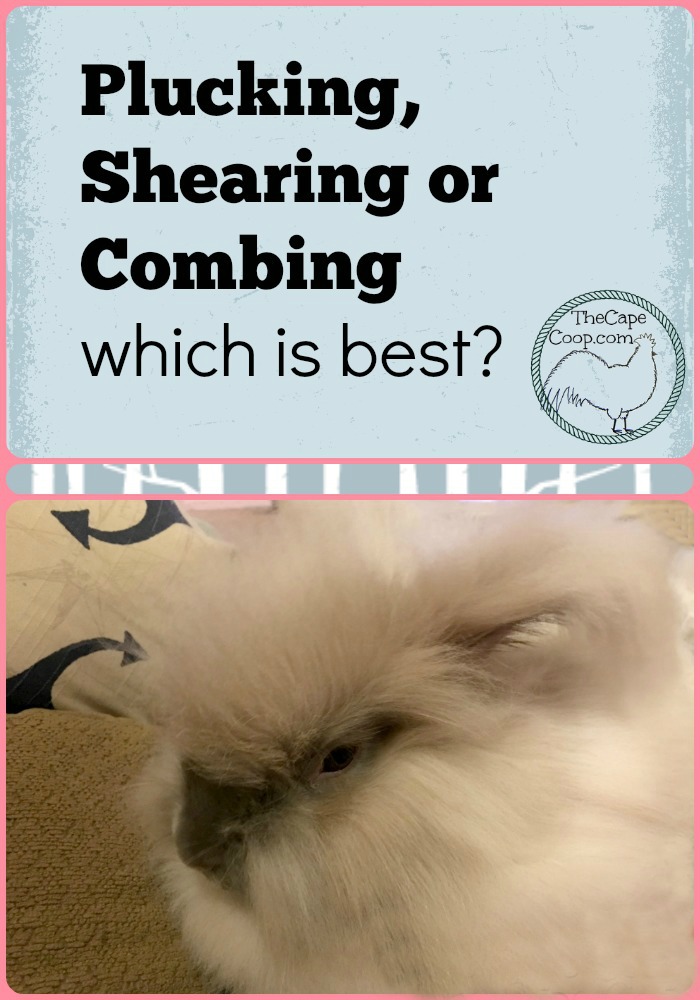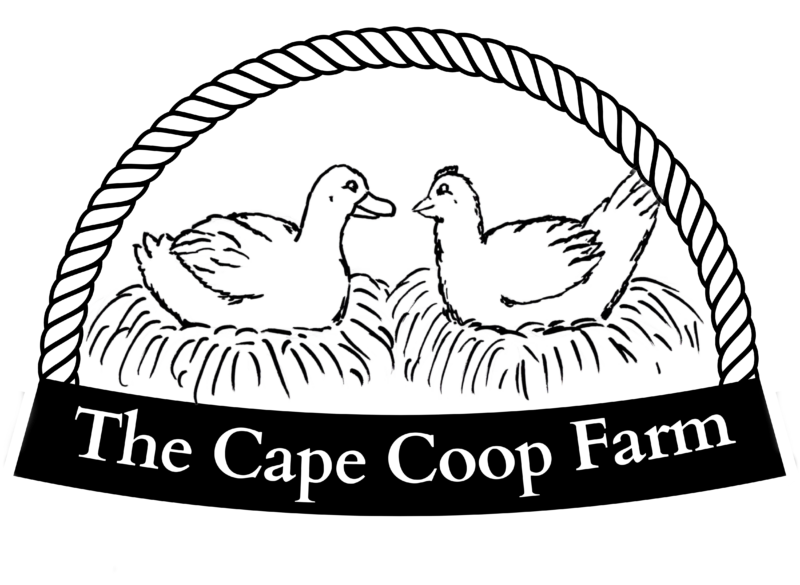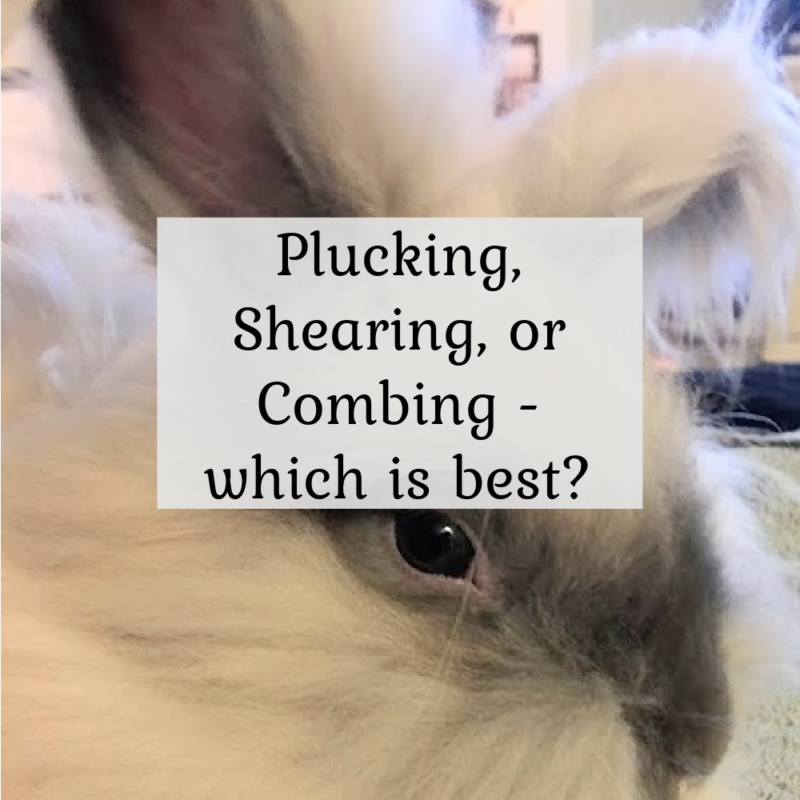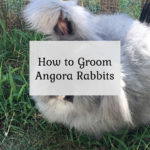---------------------------------------------------------
If you own fiber rabbits you know that keeping their coats clean and mat free can be a very time-consuming job. For the most part, there are three ways of harvesting the fibers – plucking, shearing & combing. They can all be done humanely and above all, none should cause the rabbit any harm or even any distress, and can be relaxing for you and the bunny. So which one is best?
Plucking
Yes, this one sounds horrible but it is actually the gentlest (but most time-consuming) of the three options. “Plucking” the fiber does not mean you are pulling the rabbit’s hair out of the skin.
Every four months, Angora rabbits will naturally shed their coats. When a rabbit is molting, the fur is literally falling off the rabbit’s body and is no longer attached to its skin. When you “pluck” the rabbit, you are simply running your fingers through its coat and collecting the loose hairs. You might use a “plucking” motion to separate the molted fur from the newly growing fur but you should never be pulling fur out of the skin. It should not hurt the rabbit at all.
Of all the methods, you will get the best fiber harvest from plucking, because all the fibers will be long, full-grown hairs with no short new hairs or guard hairs mixed in.
This method unfortunately leaves a bad impression because some unscrupulous commercial fiber farmers have been caught restraining animals and literally ripping the fur off their bodies when they aren’t molting, leaving them a bloody mess. This is NOT at all how plucking is done or should EVER be done. Because of these “farmers” many people think it is not possible to have humanely harvested Angora and that is just 100% untrue – you just have to know your source.
Shearing
Shearing is giving the bunny a haircut. It can be done with scissors or with electric shears and should cause the rabbit no more pain than a haircut causes you. The main advantage of shearing is the speed, this is by far the fastest method for removing fur from your rabbit.
The disadvantage is the quality of fiber will be impacted. When you shear off the fur, you are removing long full grown fur, short new fur, and the coarse guard hairs. When you try to spin the fiber, the short fibers will shed out of the yarn. Some breeds of Angora (like Germans and some Giants) never shed their fur, so shearing is the only option with these rabbits.
Combing
Combing is really just a faster version of plucking. Instead of your fingers, you use a shedding comb to brush the molted hairs off the bunny. More time-consuming than shearing, but faster than plucking and still a good quality fiber harvest, combing is a great middle ground. Sitting down and grooming your rabbit can be a relaxing part of your day for both you and your bunny friend.
So which method is best?
For most rabbit owners, the answer is a combination of all three depending on the fur quality and how you will use it. Obviously, if you have no interest in using the Angora fiber and your rabbits are strictly pets, shearing is the way to go to save the most time. Most people raising Angoras not only enjoy their company but also enjoy using their fibers for spinning or craft projects. The method of removal usually corresponds with the fur you are removing:
First quality fur – this is the longest, cleanest, and most valuable fur. This fiber is taken from the back and upper sides and should ideally be plucked
Second quality fur – this is from the neck, belly, & lower sides. This fur tends to be a little shorter and slightly courser but is still good for spinning. It might be a little dirtier and have vegetable matter (hay, debris) in it. Plucking or combing are both fine for these areas
Third quality fur – this is the shortest fur, from the bum & leg areas. This fur is not great for spinning because of its short length, but it may still work for some craft projects like felting or needle felting. Plucking, combing, or shearing are fine here
Fourth quality fur – this is the fur from any part of the body that is unusable, usually, because it is matted, felted, or stained. The only real option for removing this fur is shearing. Regular brushing can really minimize the amount of fourth-quality fur on your rabbit. But mats happen to everyone, even with regular grooming. Some ideas for this fur are stuffing for pillows/stuffed animals or you can leave it out for the wild animals to build nests with.










Bruce
Tuesday 27th of December 2022
Plucking angora rabbit hairs is essentially torture. I notice you said otherwise on your website. It’s understandable you feel this way when you’re making profit from this act. There is absolutely no need for this kind of animal cruelty for some stupid sweater.
ALANNA
Wednesday 10th of September 2025
@Bruce, you're absolutely incorrect. It's done for all breeds of rabbit and the fur that's plucked isn't connected to the skin at all. I pick my mini rexes when they shed because they'll eat the fur otherwise and they sit and kiss me while I do. You need to stop believing everything you see on the internet.
Liz
Thursday 29th of December 2022
Thank you for your snarky comment that you left without actually reading my article. Angoras naturally shed their coats every few months, you can tell they are in a shedding phase by the large amount of loose hairs stuck in their coat. Plucking is running your fingers through the fur to remove the shedded fur, it's even gentler than combing and the fur you remove is not even attached to their skin anymore. It's essentially petting your rabbit to remove dead fur. If you bothered to read the article you would have learned that. I even say in bold letter that you should never be tugging or ripping anything out of your rabbit. That is absolutely not how plucking works when you care about your animals. Just because some horrible monsters on commercial angora farms treat their animals that way do not assume that is how all rabbits are treated. Also my angoras are pets - I don't sell or even use their fiber for anything. Grooming them is just a part of keeping them health- if I don't groom them they will ingest the loose fur, clogging their digestive system and they will die
Rebecca Gardner
Tuesday 1st of December 2020
I like how you explained that shearing is basically when we give the bunny a haircut. My brother is looking into buying a bunny for his daughter as a surprise for the holidays. He's trying to do as much research as he can beforehand, so the info you shared here about rabbit grooming should be really helpful for him!
Liz
Tuesday 1st of December 2020
Glad I could help! :)
Luna’s Mom
Wednesday 15th of April 2020
Oh good :) thank you, Liz!
Luna’s Mom
Wednesday 15th of April 2020
Hi I have an English angora and I find it easiest to pluck her. It comes out very easily and she doesn’t mind the process, but it leaves red patches of skin that look dry and irritated for a few days. Is this normal, and should I treat the dry areas with anything?
Liz
Wednesday 15th of April 2020
Plucking her fur shouldn't cause any irritation because the fur has already released from the skin. It could just be that with the loose fur removed you are now seeing more of her skin. Rabbit's skin usually has a pinkish hue to it, but it sounds like your bun might just have dry skin. I notice this on my rabbits sometimes in the winter when there is less humidity in the air.
Joan
Thursday 6th of February 2020
Hi Liz, My German Angora is having some trouble passing his wool, in spite of regular grooming. I think it's time for shearing, but I'm concerned he might be cold if I do it now. He lives indoors in the coolest room in the house. At night and when I'm not home I set the heat at 62 degrees, so his room is probably around 58-60 degrees. Will he be comfortable if I shear him soon? Thanks for your help.
ALANNA
Wednesday 10th of September 2025
@Joan, as long as he has some fur left he will be totally fine. My mini rexes have much less fur than a shorn angora and do great even in winter outdoors in New England.